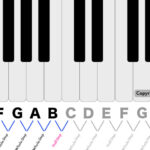Guitar Foot Pedals, often called effects pedals or stompboxes, are essential tools for guitarists and bassists looking to shape their sound. These compact units sit at your feet, ready to be engaged to alter your instrument’s tone in countless ways. A typical effects pedal is designed to produce a single effect, and even the most basic models offer a footswitch for on/off control, a few knobs (potentiometers) to adjust the effect’s parameters like intensity or tone, and an LED indicator showing whether the effect is active. More advanced pedals can feature multiple footswitches, a wider array of knobs and switches, and even digital displays to manage complex multi-effects or presets.
Linking several effects pedals together creates what’s known as an effects chain or signal chain. This chain is fundamental to a musician’s unique sonic identity. The order in which pedals are connected and used can dramatically change the overall sound, allowing for intricate layering and sound sculpting.
Perhaps the most ubiquitous guitar foot pedal is the distortion or overdrive pedal. These pedals add harmonic richness and sustain to your guitar signal, ranging from a subtle warmth to full-blown distortion. They achieve this by either clipping the audio signal to create distortion or by boosting the guitar’s signal to push the amplifier into overdrive, a sound central to rock, blues, and metal genres.
Beyond distortion, a vast landscape of guitar foot pedals exists, each offering unique sonic textures. The wah-wah pedal, with its distinctive rocking motion, sweeps through frequencies, creating a vocal-like effect. Fuzz pedals deliver a thick, heavily saturated distortion, while delay pedals create echoes, and flanger and phaser pedals produce swirling, psychedelic sounds. Reverb pedals simulate the natural ambience of different spaces, chorus pedals add richness and depth, compression pedals even out dynamics, looping pedals record and playback phrases, and boost pedals increase signal level for solos or to drive other pedals harder. For precise tonal adjustments, many guitarists rely on EQ pedals to fine-tune specific frequencies, sculpting their sound to perfection. The sheer variety of brands and effects available ensures that the possibilities for sonic exploration are virtually limitless.
To maintain clarity and optimize the impact of each effect, a general guideline for arranging your signal chain exists. It’s common practice to place compression, wah, and overdrive pedals at the beginning of the chain. These pedals typically interact directly with the raw guitar signal. Modulation effects like chorus, flanger, and phaser often find their place in the middle, adding texture and movement. Time-based effects such as delay, echo, and reverb are usually positioned at the end of the chain, creating spaciousness and ambience without muddying earlier effects.
Using multiple effects pedals can sometimes introduce unwanted noise and hum into your guitar signal. To combat this, many musicians incorporate a noise gate or noise suppression pedal, often placed at the beginning or end of their effects chain. These pedals effectively reduce unwanted background noise, ensuring a cleaner and more focused sound, particularly at higher volumes or with high-gain effects. Guitar foot pedals are more than just accessories; they are powerful tools that unlock a universe of sonic possibilities, enabling guitarists to craft their signature sound and explore the boundless realms of musical expression.

